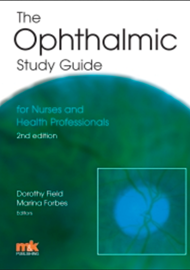In the last decade, care provision in ophthalmology has changed dramatically. Due to increasing demands on the service, the roles of nurses and other healthcare professionals have expanded to encompass work that was traditionally carried out by doctors.
This model of service delivery requires training and governance to ensure that the care delivered is not only cost-effective but also safe and of high quality. The Ophthalmic Study Guide offers a very good introduction to ophthalmic care, which can complement the knowledge and skills gained by nurses and allied health professionals in clinical practice.
The book can be broadly divided into three sections. The first section deals with the basic sciences – anatomy and physiology of the eye, refraction and pharmacology. Without delving into much detail, it outlines the basic anatomy and physiology. But, more importantly, it highlights the application of the relevant anatomy and physiology to clinical work. The second section addresses the bulk of clinical topics encountered in day-to-day practice – cataracts, glaucomas and retina. It contains chapters detailing preoperative cataract assessment, intraoperative management and postoperative cataract care. There are three chapters dedicated to the management of open angle, angle closure and secondary glaucomas and a couple on retinal problems and macular degeneration. The last section is about ophthalmic equipment and procedures.
The unique feature about this book is the way each chapter is structured. A ‘to do…’ boxed highlighted section in each chapter encourages the reader to gain more in depth knowledge on a particular topic, while red flag symbols placed within the text underline the significance of a particular symptom in the clinical context. At the end of each chapter are enumerated web resources and references for further reading. There are questions at the end of each chapter, which test the readers’ understanding and recall. This is a great way to consolidate the new concepts learnt which will ensure safe clinical practice later on.
I would recommend this book as an initial study guide for all nurses, nurse practitioners and other allied health professionals who wish to advance their knowledge and skills in ophthalmic care and take on more varied roles in today’s NHS.




